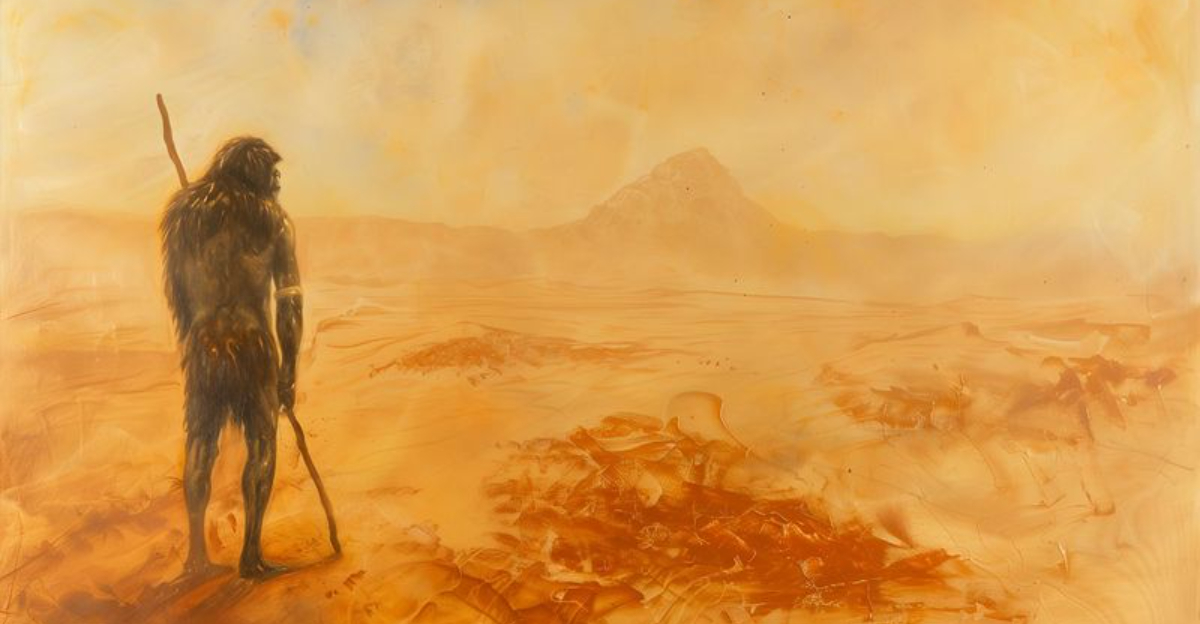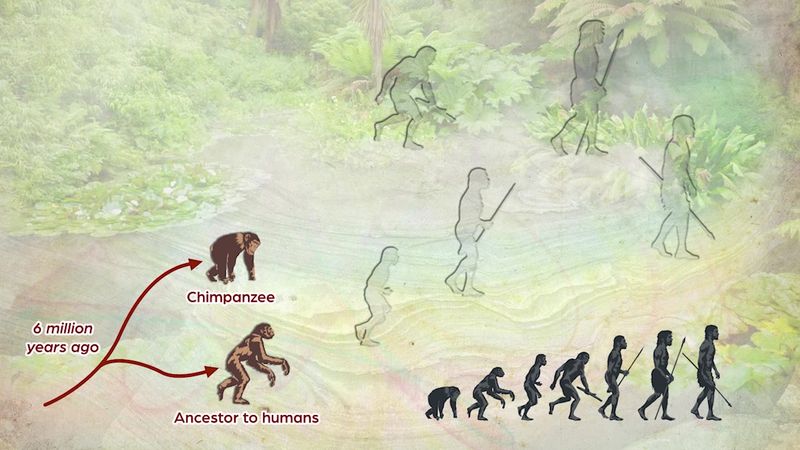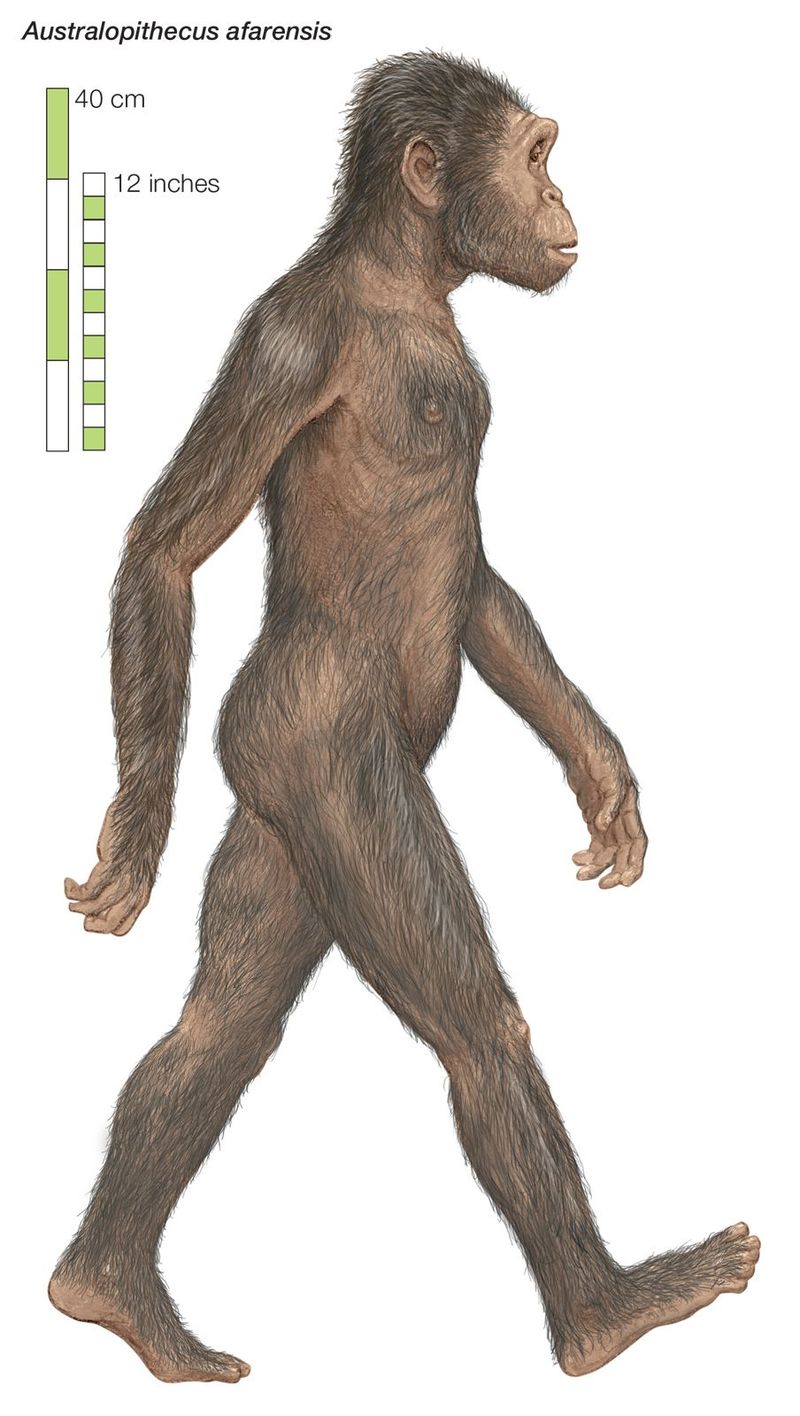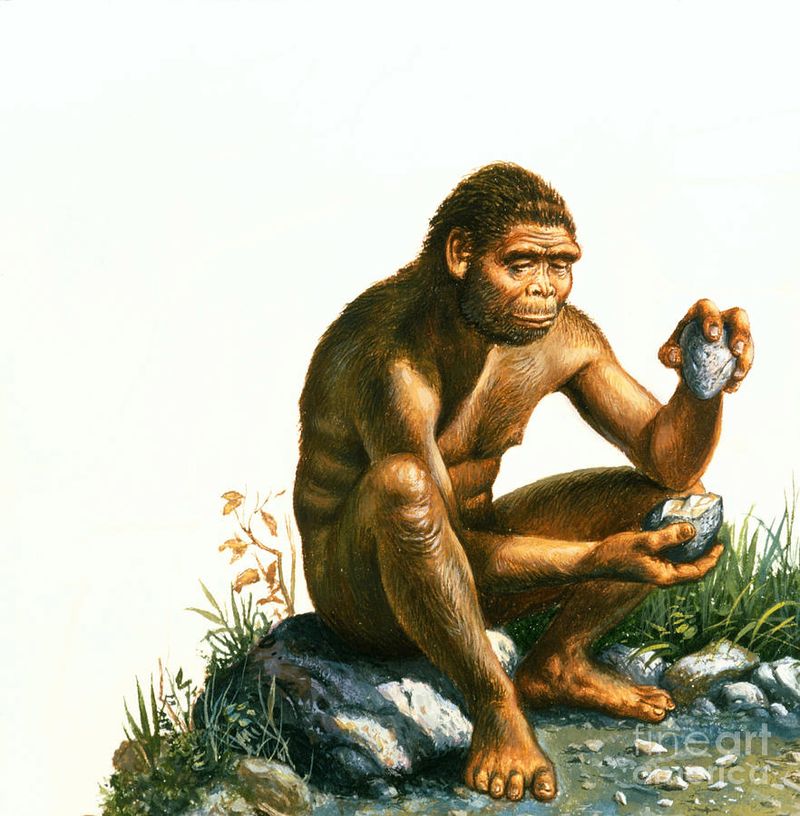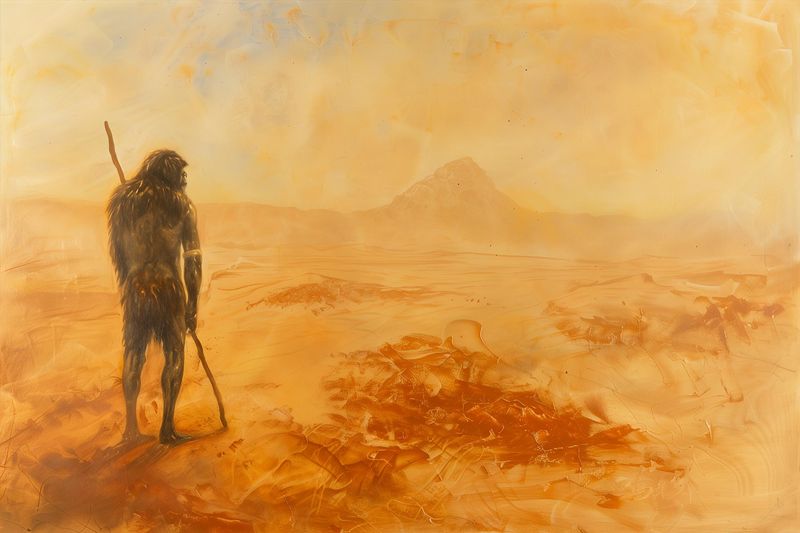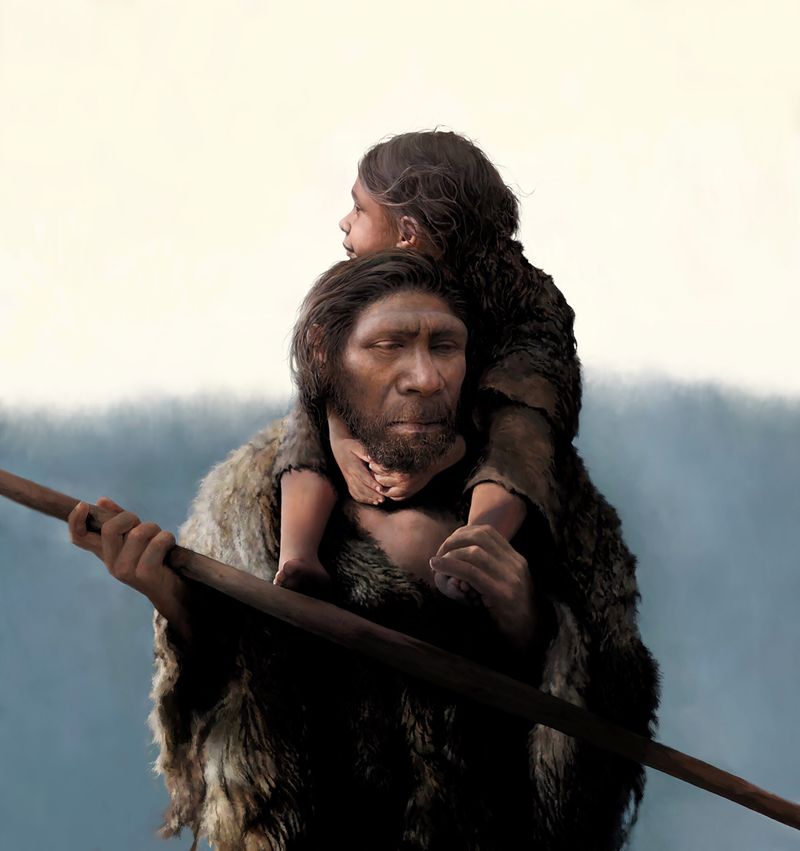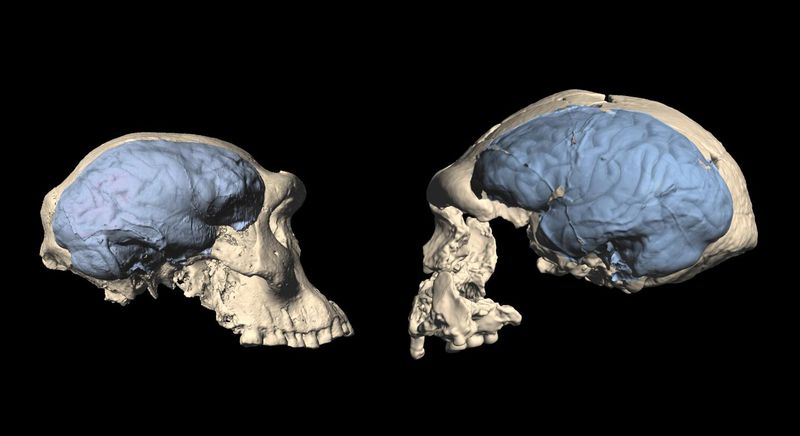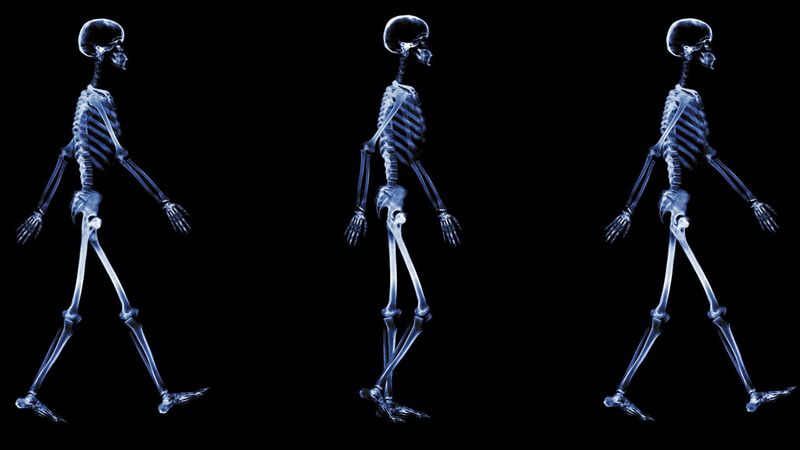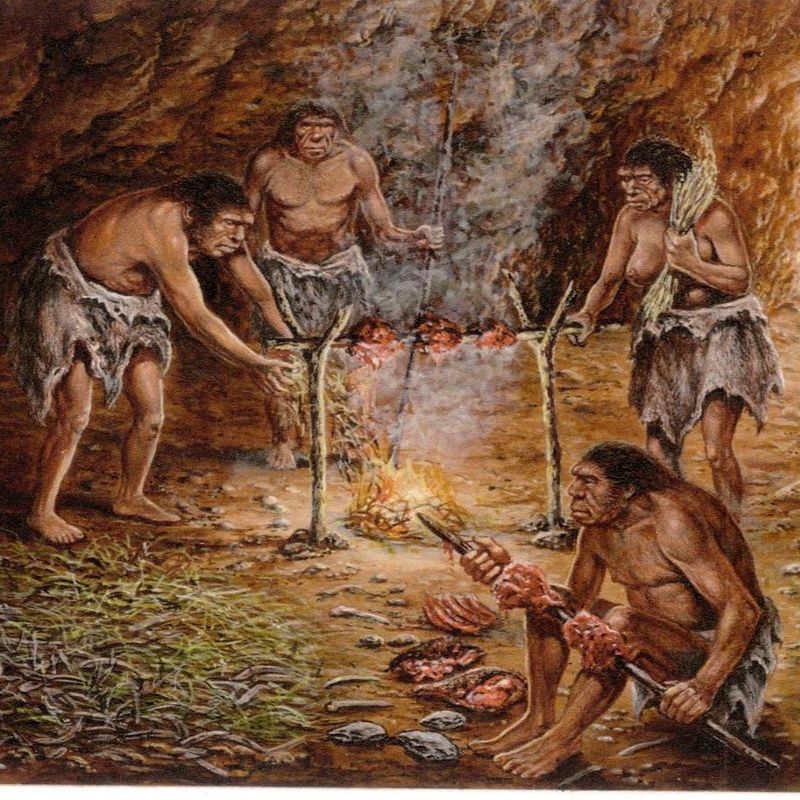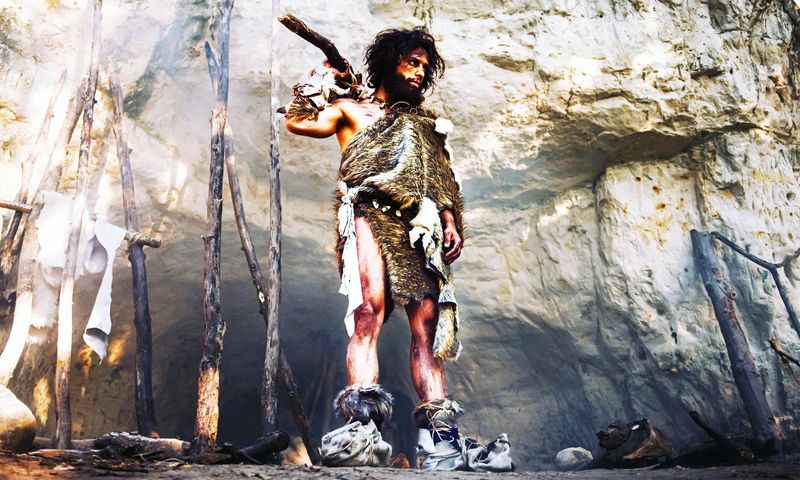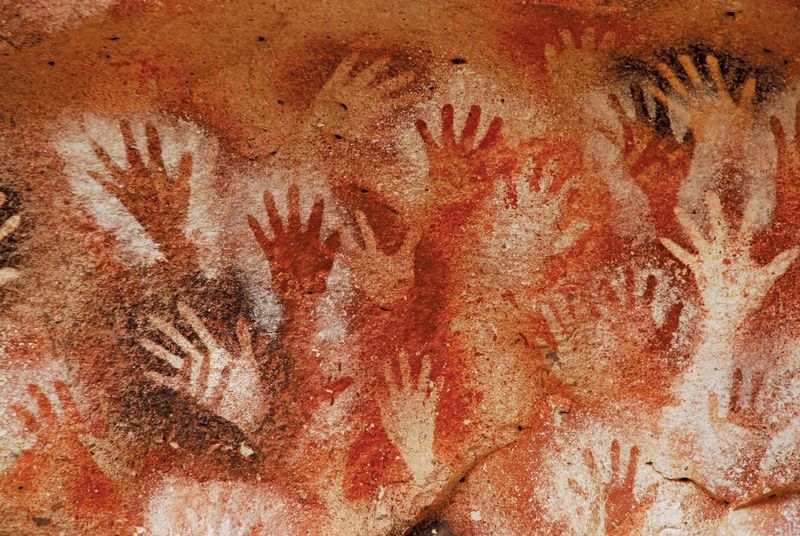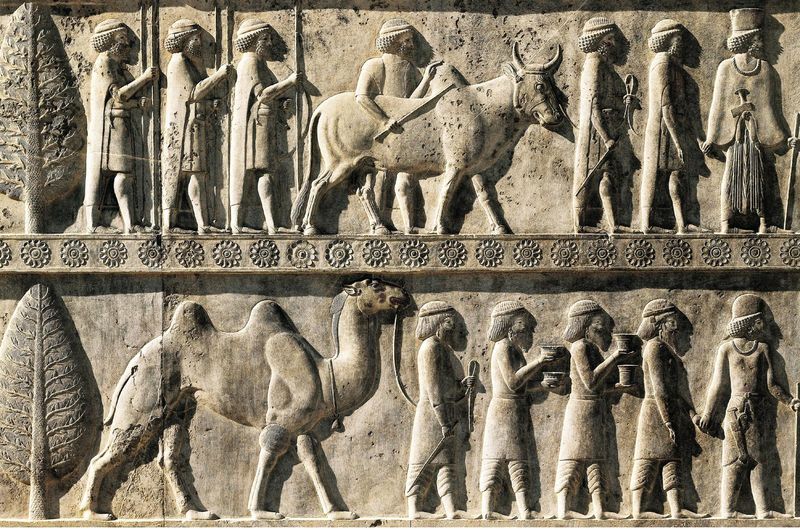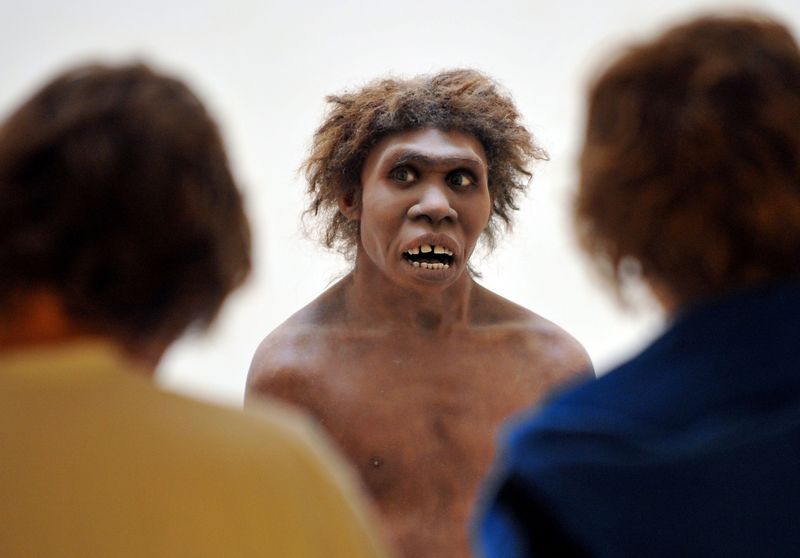Explore how mankind has evolved over millions of years, from our earliest ancestors to the sophisticated beings we are today.
This journey unveils the significant milestones in human evolution, shedding light on how each stage contributed to our current existence.
1. Humans and Chimps Share a Common Ancestor
Approximately 6 to 7 million years ago, humans and chimpanzees diverged from a shared ancestor. This pivotal moment marked the beginning of a unique evolutionary path for humans. The environment of dense forests and diverse fauna set the stage for this evolutionary branching. The genetic similarities between humans and chimps today are reminders of this shared lineage. Understanding this connection provides insight into the evolutionary processes that shaped us.
2. Australopithecus Walked Upright
The discovery of Australopithecus afarensis, notably “Lucy,” revealed a species that walked on two legs in the African savannah. This upright posture distinguished them from other apes, facilitating new survival strategies. Their bipedal movement allowed them to see over tall grasses and travel longer distances across open landscapes. This physical adaptation was a key evolutionary step toward modern humans, showing early hominins’ capacity for change.
3. The Genus Homo Appeared 2.5 Million Years Ago
Homo habilis, often known as the “handy man,” marks the advent of the genus Homo around 2.5 million years ago. This period was characterized by the development of basic stone tools, showcasing early human ingenuity. The ability to manipulate objects and create tools played a crucial role in survival and adaptation. This era laid the groundwork for further evolutionary advancements, highlighting the importance of tool use in human evolution.
4. Homo erectus Was the First to Leave Africa
Homo erectus ventured beyond Africa approximately 1.8 million years ago, becoming the first hominin to explore new continents. This migration led them to Asia and Europe, where they adapted to various climates and ecosystems. Mastery of fire and advanced tool-making skills distinguished Homo erectus from their predecessors. Their ability to spread across continents marked a significant evolutionary milestone, showcasing early humans’ resilience and adaptability.
5. Neanderthals Were Our Cousins, Not Our Ancestors
Neanderthals, our distant cousins, thrived across Europe and western Asia. Unlike direct ancestors, they represent a separate branch of the human family tree. Despite their extinction, Neanderthals interbred with Homo sapiens, leaving traces in modern human DNA. Their robust build and adaptation to cold climates highlight their unique evolutionary path. The presence of cultural artifacts suggests a sophisticated society, challenging our understanding of what it means to be human.
6. Our Brains Tripled in Size
The human brain has undergone significant growth, tripling in size compared to early hominins. This expansion, particularly in the prefrontal cortex, facilitated advanced cognitive abilities such as planning, language, and abstract thought. The evolution of the brain reflects the complex demands of survival and social interaction. Increased brain size is a defining feature of human evolution, emphasizing the importance of intelligence in human success.
7. Bipedalism Freed Our Hands
Walking upright released early humans’ hands, enabling them to manipulate their environment more effectively. This bipedalism allowed for complex tool use and enhanced interaction with surroundings. With hands free, humans could develop skills essential for survival, such as crafting tools and gathering food. The ability to stand tall offered advantages in spotting predators and navigating varied terrains, underscoring the evolutionary benefits of bipedalism.
8. Humans Evolved to Run Long Distances
Human anatomy evolved to support endurance running, favoring persistence over speed. This ability likely aided in hunting, enabling early humans to pursue prey over long distances. Features such as Achilles tendons, efficient sweat glands, and an upright posture exemplify adaptations for sustained activity. This endurance capability highlights an evolutionary strategy focused on resilience and adaptability, critical for survival in diverse environments.
9. Wisdom Teeth Are Evolutionary Leftovers
Wisdom teeth are vestiges of an ancestral diet requiring robust jaws and more teeth for grinding plant material. As human diets changed and jaw sizes decreased, space for these third molars diminished, often leading to dental complications. This evolutionary leftover illustrates changes in dietary habits and facial structure. Despite their problematic nature, wisdom teeth remain a tangible link to our evolutionary past, reflecting adaptations over time.
10. Goosebumps Are a Primate Inheritance
Goosebumps are a reflex inherited from our primate ancestors, who used body hair to retain warmth or appear larger when threatened. This autonomic response raises hairs, though largely redundant in modern humans. The presence of goosebumps offers insight into our evolutionary history, where dense body hair provided significant survival advantages. This small, often unnoticed reaction serves as a reminder of the evolutionary connections shared with other primates.
11. Tool Use Predates Homo sapiens
Stone tools dating back 3.3 million years reveal that tool use predates the Homo genus. These primitive tools signify early cognitive development and the ability to solve problems. The crafting and utilization of tools were pivotal in shaping the evolutionary trajectory of hominins. Understanding these early innovations provides a window into the intellectual advancements that predate modern humans, illustrating the deep roots of technological development.
12. Fire Changed Everything
The control of fire, achieved around 1 million years ago, was transformative for early humans. Cooking food improved nutrition and digestion, contributing to brain growth. The warmth and protection fire provided facilitated social gatherings and community bonding. This mastery allowed humans to thrive in diverse climates, showcasing fire’s role as a catalyst for evolutionary progress. The ability to harness fire marks a pivotal moment in human history.
13. Language Likely Developed Gradually
Language development is a complex process that likely began as early as 200,000 years ago. Early humans utilized gestures and sounds to convey information, laying the groundwork for complex language systems. The gradual evolution of language reflects cognitive advancements and social needs. As communication became more sophisticated, it played a crucial role in fostering cooperation and cultural development, highlighting its significance in human evolution.
14. Clothing Was Invented Over 100,000 Years Ago
Genetic studies of body lice suggest clothing appeared over 100,000 years ago. Early humans crafted garments from animal hides, providing protection against harsh climates. This invention marked a significant adaptive strategy, allowing migration to colder regions. Clothing’s role extended beyond survival, influencing social identity and cultural expression. The creation of clothing demonstrates human ingenuity and adaptability, illustrating a critical step in the evolutionary journey.
15. Early Humans Created Art 70,000 Years Ago
Early humans expressed creativity through art, as evidenced by cave paintings and decorated shell beads from 70,000 years ago. These artifacts reflect symbolic thinking and the capacity for abstract expression. Art played a role in communication, cultural identity, and spiritual beliefs. The creation of art marks a milestone in cognitive evolution, showcasing the depth of human imagination and the desire to interpret and influence the world around us.
16. The Agricultural Revolution Began Around 10,000 Years Ago
The Agricultural Revolution, beginning around 10,000 years ago in the Fertile Crescent, transformed human societies. Transitioning from nomadic lifestyles to settled farming communities led to population growth and permanent settlements. The domestication of plants and animals provided reliable food sources, fostering economic and social complexity. This shift laid the foundation for modern civilizations, highlighting agriculture’s crucial role in human advancement and societal development.
17. Cities Sparked Social Complexity
As agriculture produced surpluses, cities like Uruk emerged, sparking social complexity. Urban centers became hubs of trade, governance, and cultural exchange, fostering hierarchies and innovation. The development of writing systems and legal codes preserved knowledge and organized societies. These advancements illustrate the transformative power of cities in shaping human history. The rise of urban life marks a significant leap in social evolution, contributing to the diversity of modern cultures.
18. We Domesticated Ourselves
Over time, humans selected traits favoring sociability and cooperation, a process sometimes called “self-domestication.” This evolution cultivated empathy, reducing aggression and enhancing group cohesion. The ability to communicate and collaborate became essential for survival, fostering societal bonds and cultural growth. This self-domestication highlights the role of selection pressures in shaping human nature, emphasizing the importance of social adaptability in the evolutionary narrative.
19. Writing Systems Emerged 5,000 Years Ago
The emergence of writing systems 5,000 years ago revolutionized information preservation and communication. From Sumerian cuneiform to Egyptian hieroglyphs, writing documented laws, trade, and cultural narratives. This innovation facilitated the administration of complex societies and the transmission of knowledge across generations. Writing systems underscore the cognitive and cultural advancements of ancient civilizations, highlighting the enduring impact of recorded language on human history.
20. Religion Helped Unite Societies
Religion played a vital role in uniting early societies through shared beliefs and rituals. These practices fostered social cohesion and cultural identity, enabling large-scale cooperation and trust among strangers. Temples and ceremonial sites served as focal points for communal activities, reinforcing collective values. Religion’s influence on social organization and cultural development underscores its significance in shaping human civilization and evolutionary success.
21. We All Descend from a Small Genetic Pool
Genetic studies suggest modern humans experienced bottlenecks, nearly facing extinction several times. These events reduced genetic diversity, but subsequent migrations led to varied adaptations. The concept of a small ancestral pool explains shared genetic traits and highlights human resilience. Understanding these bottlenecks offers insights into population dynamics and evolutionary pressures that shaped modern human diversity, emphasizing the interconnectedness of all people.
22. Humans Are Still Evolving
Despite advancements, humans continue to evolve. Traits like lactose tolerance and disease resistance showcase ongoing adaptation to environmental changes. Genetic studies reveal subtle shifts in brain wiring and physical attributes, reflecting continuous evolutionary pressures. Understanding current evolution highlights the dynamic nature of human development and the interaction between genetics and environment. This continuing process underscores the perpetual journey of adaptation and change.
23. Skin Color Is a Recent Adaptation
Human skin color evolved as an adaptation to varying UV radiation levels. Early humans migrating to low-UV regions, such as Europe and Asia, developed lighter skin to synthesize Vitamin D efficiently. This adaptation reflects the interplay between environment and biology, shaping diverse physical traits. The evolution of skin color underscores the complexity of human adaptability and the role of environmental pressures in shaping our physical appearance over generations.
24. There’s More Neanderthal in Us Than You Think
Non-African populations inherit 1–4% of their DNA from Neanderthals due to historical interbreeding. This genetic legacy influences various traits, including immune responses and physical characteristics. The presence of Neanderthal DNA highlights the interconnected nature of human evolution and the complexity of our ancestry. Understanding this genetic contribution provides insight into the shared evolutionary history and the diverse influences shaping modern humanity.
25. The Future of Human Evolution May Be Digital
The future of human evolution may intertwine with technology, as advancements in genetics and artificial intelligence shape new possibilities. CRISPR and AI integration hint at a future where biological and technological evolution merge. Space colonization and digital enhancements could redefine human capabilities and experiences. This potential evolution raises questions about identity, ethics, and the future trajectory of humanity, highlighting the profound impact of technology on our evolution.
